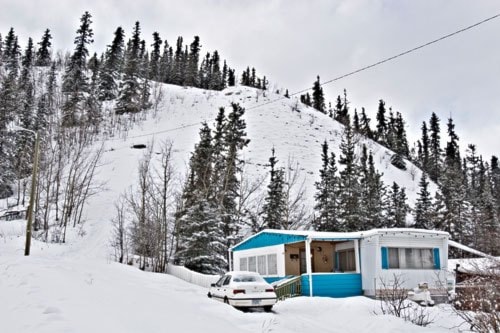In the early 1970s, if your downtown house was at risk of being crushed by the clay cliffs, Whitehorse would purchase your house at market value and pay to move you out.
Thirty years after the fact, the owners of 804 Strickland Street have finally accepted the offer—collecting $90,000 for land that will soon be levelled and barred from future development.
It’s “annoying,” said city councillor Dave Stockdale.
“We offered these people the opportunity, they chose not to move for many, many years, and now house prices are very, very high and it’s costing the city a lot more money to buy those people out,” said Stockdale.
“It frustrates me that that situation has been allowed to continue,” he said.
A series of mudslides around the clay cliffs in the early 1970s prompted uneasy city officials to take a closer look at city properties that could be in danger of being crushed or damaged by sliding debris.
“There was enough concern at that point that if the city didn’t take action to acquire these properties, that they could leave themselves open to a lot of liability,” said Ross.
City planners and engineers drew up an “escarpment zone” highlighting 80 downtown properties at risk from the adjacent cliffs.
Seventy residents immediately vacated, their homes were demolished and the land returned to “natural states.”
Ten residents resisted, choosing to remain in the zone until other factors caused them to hand the property over to the city at market rate.
Seven more escarpment properties trickled in over the 1980s and 1990s, and with the purchase of 804 Strickland, only two remain—at Drury Street and next to the Downtown Urban Gardener’s plot.
Just as loose mud hung over the heads of the holdouts, legal liability dangled over Whitehorse. If an escarpment resident were to be injured or killed in a mudslide, the city would be liable.
City officials elected not to force the holdouts to relocate.
“We felt that the risk was not such that we needed to take that immediate initiative,” said Ross.
It wouldn’t hurt to apply a little pressure, said Stockdale.
“We are at a point now where we can just say, ‘We won’t purchase those properties; you’ll die, and you can’t pass it on to anybody because you can’t rebuild there,’” he said.
The “controversial” part of the whole situation is that some of the levelled properties might not even have been in danger in the first place, said Ross.
In three decades, none of the seized properties have ever seen a whiff of mudslide.
Recent city reports have shown that some of the escarpment properties—currently held as vacant land by the city—could safely handle future development, something Ross attributes to better understanding and management of clay cliff erosion.
“But if we ever open this stuff back up, some of the people that were told to move may still be around; ‘Hey, hey, hey! You told us to get off and now it’s back on the market,’” said Ross.
Contact Tristin Hopper at
tristinh@yukon-news.com
